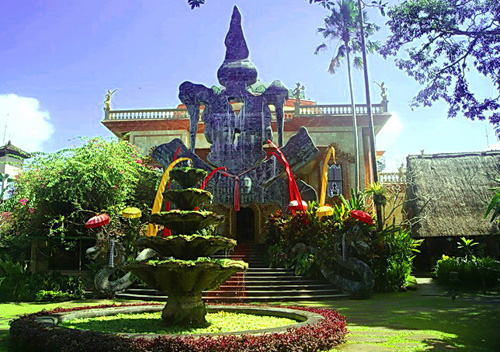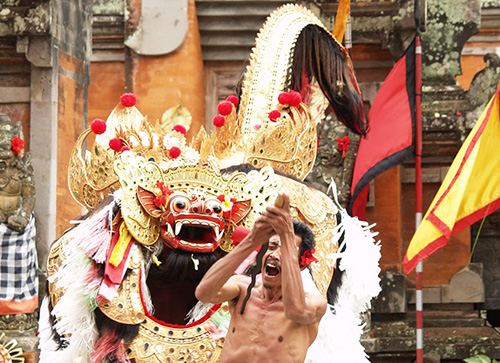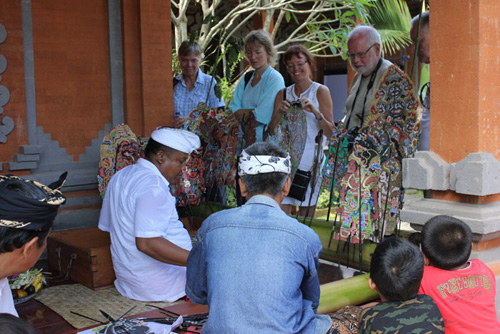Balinese Life, Art and Culture
Balinese Art
Ubud and Batuan are known for their paintings, Mas for their woodcarvings, Celuk for gold and silver smiths, and Batubulan for their stone carvings. Covarrubias describes Balinese art as, "... a highly developed, although informal Baroque folk art that combines the peasant liveliness with the refinement of classicism of Hinduistic Java, but free of the conservative prejudice and with a new vitality fired by the exuberance of the demonic spirit of the tropical primitive". Eiseman correctly pointed out that Balinese art is actually carved, painted, woven, and prepared into objects intended for everyday use rather than as object d 'art.
Some of Balinese art museums can be seen in Ubud and Denpasar such as Bali Museum, Neka Museum, Arma Museum, Antonio Blanco Museum and more.

Barong, Kecak Fire and Trance Dance Performances
The Barong Dance is Balinese cultural performance steeped in mythology. There are two main characters in this dance: Barong, a lion-like spirit that protects the land and its people, and Rangda, a demon queen. A kris is an asymmetrical dagger popular in Indonesian culture. This dance includes many men wielding the ominous looking blade which lends itself to the title.
Kecak is a dance performed by 100 or more dancers wearing checkered cloths around their waists. The dancers chant together while swaying to the beat. The dance draws crowds because of it’s large presence plus it usually includes fire spectacles.
These performances can be seen at Uluwatu, Denpasar and Gianyar.

Bali Cultural Village & Spiritual Journey
Bali Budaya, supported by the residents of Banjar Batusepih, invite you to explore and enjoy the values of today’s traditional Balinese farming life. Bali Budaya, established in 1983, is a family cooperative that accommodates the sculptors in Banjar Batusepih and its surrounding areas.
Located on a block of land of almost 2 hectares in area, and supported by the community and its natural environment, Bali Budaya has developed it self into an organizer of tourism activities related to Balinese customs and culture, especially those activities involving Balinese traditional farming.
Tourists will learn new insights regarding today’s life of the Balinese traditional farmers, which is our day-to-day life, while our local community will enjoy the direct economic and educational effects of the programs without losing the cultural roots of traditional farming.


